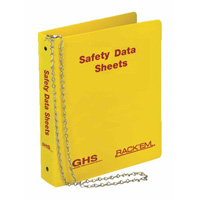| The Home page of ILPI's Safety Data Sheet (SDS) Resource, the leader in SDS information since 1995! | |
| The history and philosophy behind this resource. | |
| A curated collection of books and reference materials concerning Safety Data Sheets and closely related topics. | |
| Paste your plain text SDS into the SDS-Demystifier, and it will be converted into a hypertext-enriched document with links to detailed explanations of each key term. | |
| An extensive list of frequently asked questions about Safety Data Sheets including regulations, content, compliance, and more. | |
| A humorous take on Safety Data Sheet jargon. Fill in the blanks on our entry form to generate a personalized Unsafety Data Sheet to share with your coworkers. | |
| Since 1995, we've maintained this massive curated list of the best places to find Safety Data Sheets on the Internet. | |
| Way more than a glossary, this hypertext-enhanced resource covers hundreds of SDS-related terms and expert knowledge. Each entry includes both the SDS relevance and links to additional authoritative resources. | |
| Archived results of Safety Data Sheet related polls taken by some of our millions of site visitors | |
| You are here! The OSHA regulations behind SDS regulations, including the inspection guidelines and over 400 official interpretations letters under the Hazard Communication Standard | |
| Commercial suppliers of SDS authoring and management software as well as cloud compliance services. | |
| Commercial companies that will create SDS's for your specific needs as well as SDS translation companies. |

Safety signs, banners, and scoreboards? Get yours at Safety Emporium!
CPL 2-2.38D - Appendix D
Guide for Reviewing MSDS Completeness
| This version of the inspection procedures for the OSHA HazCom Standard is no longer valid. It is presented here solely for historical purposes and has been replaced by CPL 02-02-079 effective July 9, 2015. The subjects of the Appendices have also changed. |
NOTE: This guide has been developed for use as an optional aid during inspections.
During CSHO review for Material Safety Data Sheet completeness, the following questions may be helpful:
- Do chemical manufacturers and importers have an MSDSfor each hazardous chemical produced or imported into the United States?
- Do employers have an MSDS for each hazardous chemical used?
- Is each MSDS in at least English?
- Does each MSDS contain at least the:
- Identity used on the label?
- Chemical and common name(s) for single substance hazardous chemicals?
- For mixtures tested as a whole:
- Chemical and common name(s) of the ingredients which contribute to the known hazards?
- Common name(s) of the mixture itself?
- Chemical and common name(s) of the ingredients which contribute to the known hazards?
- For mixtures not tested as a whole:
- Chemical and common name(s) of all ingredients which are health hazards (1 percent concentration or greater), including carcinogens (0.1 percent concentration or greater)?
- Chemical and common name(s) of all ingredients which are health hazards and present a risk to employees, even though they are present in the mixture in concentration of less than 1 percent
or 0.1 percent for carcinogens?
- Chemical and common name(s) of all ingredients which are health hazards (1 percent concentration or greater), including carcinogens (0.1 percent concentration or greater)?
- Chemical and common name(s) of all ingredients which have been determined to present a physical hazard when present in the mixture?
- Physical and chemical characteristics of the hazardous chemical (vapor pressure, flash point, etc.)?
- Physical hazards of the hazardous chemical including the potential for fire, explosion, and reactivity?
- Health hazards of the hazardous chemical (including signs and symptoms and medical conditions aggravated)?
- Primary routes of entry?
- OSHA permissible exposure limit (PEL)? The American
Conference of Governmental Industrial Hygienists
(ACGIH) Threshold Limit Value (TLV)? Other exposure limit(s) (including ceiling and other short term limits)?
- Information on carcinogen listings (reference OSHA regulated carcinogens, those indicated in the National Toxicology Program (NTP) Annual Report on Carcinogens and/or those listed by the International Agency for Research on Carcinogens (IARC))?

Major chain restaurants get their kitchen safety compliance products from Safety Emporium. Just sayin'…-
NOTE: Negative conclusions regarding carcinogenicity, or the fact that there is
no information, do not have to be reported unless there is a specific space or blank for carcinogenicity on the form.
- Generally applicable procedures and precautions for safe handling and use of the chemical (hygienic practices, maintenance and spill procedures)?
- Generally applicable control measures (engineering controls, work practices and personal protective equipment)?
- Pertinent emergency and first aid procedures?
- Date that the MSDS was prepared or the date of the last change?
Name, address and telephone number of the responsible party?
- Identity used on the label?
- Are all sections of the MSDS completed?
Previous: Appendix C | Top of Page | Next: Appendix E
| This version of the inspection procedures for the OSHA HazCom Standard is no longer valid. It is presented here solely for historical purposes and has been replaced by CPL 02-02-079 effective July 9, 2015. The subjects of the Appendices have also changed. |
The official, public domain, OSHA version of this document is available at https://www.osha.gov/enforcement/directives/cpl-02-02-038.
